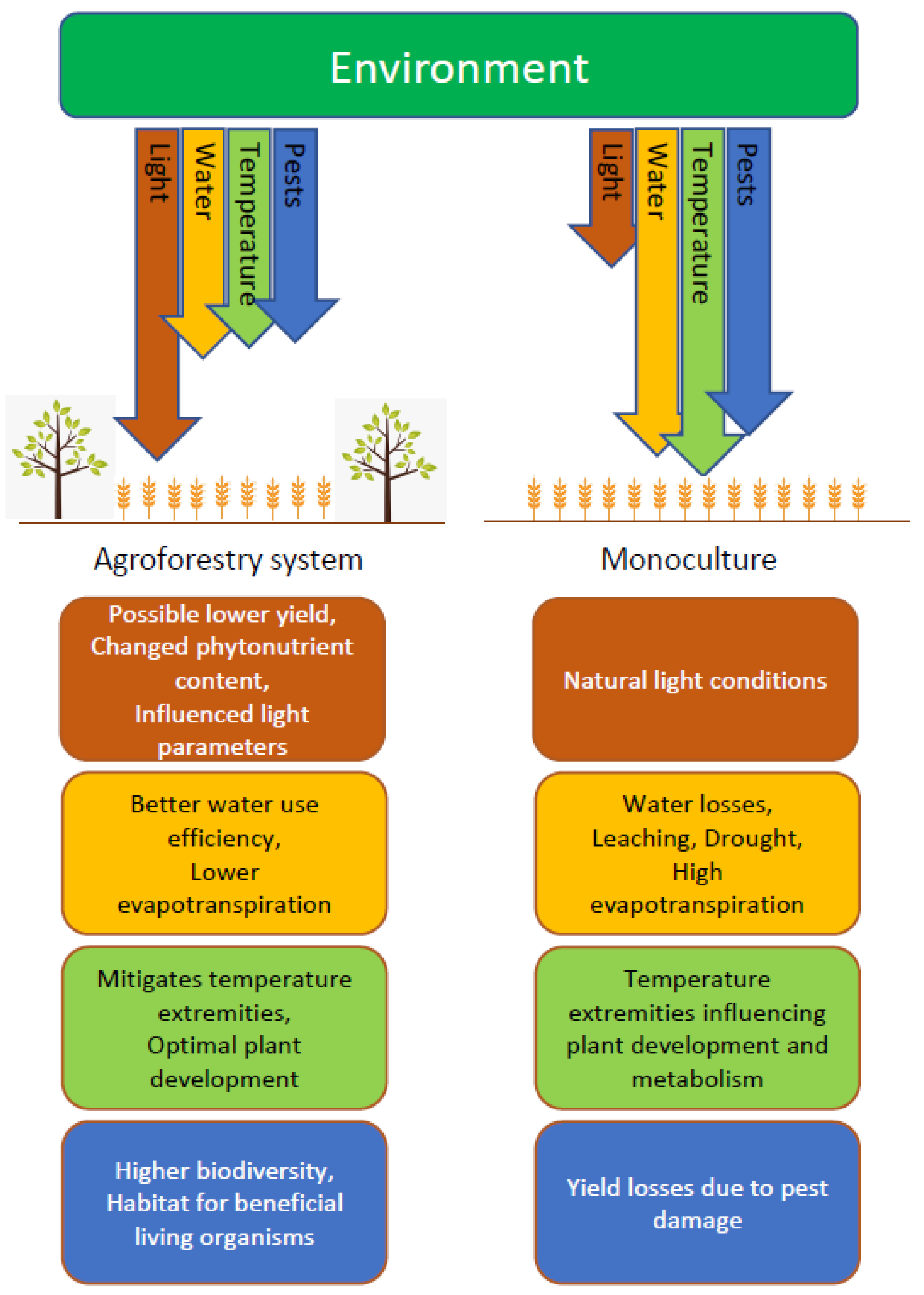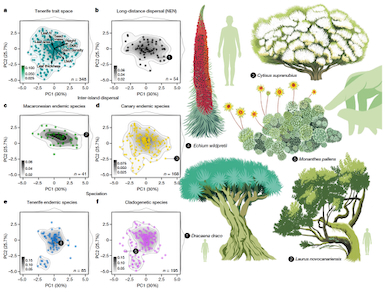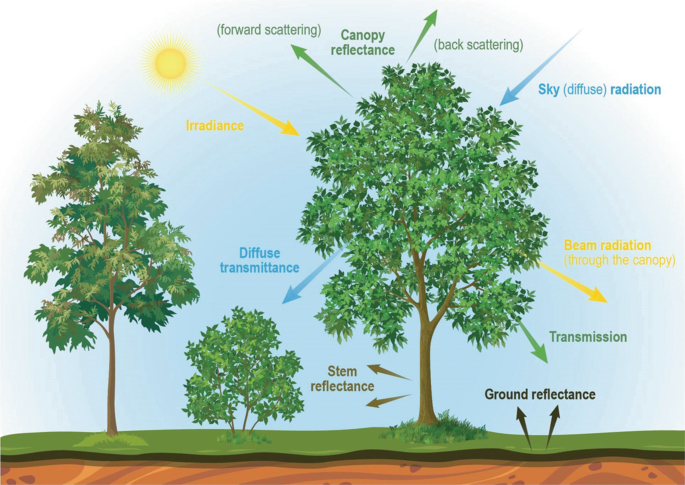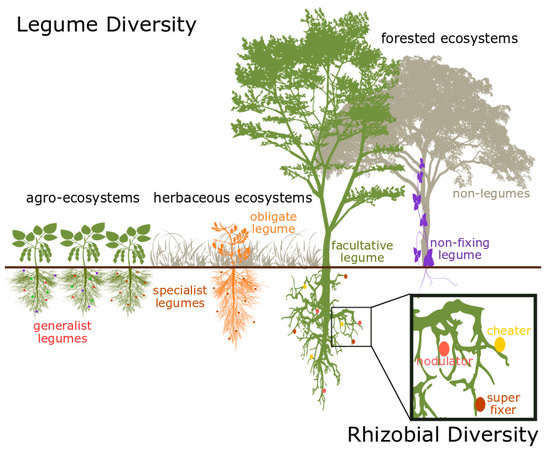Plant functional traits and types: Their relevance for a better
Por um escritor misterioso
Last updated 22 abril 2025

It is proposed here to analyse the potential and limitations of the PFTT concepts in the case of AFS in the humid tropics, notably referring to rainforest dynamics regarding succession patterns. Complex Agroforestry Systems (AFS) in the humid tropics are mixed forest-like ecosystems that often display high species diversity that makes their structure and functioning difficult to understand and simulate. Plant Functional Traits and Types (PFTT) are broadly used concepts in community and ecosystem ecology to address the responses of species to changes in the environment and/or the contribution of species to ecosystem functions. The relevance of these concepts, developed for natural ecosystems, for a better understanding of AFS is unknown but we hypothesize that they might be useful to gain a better understanding of the resilience properties of AFS and to answer the following questions: What is the role of AFS species composition in ecosystem functions? and, conversely: How do environmental changes affect that species composition, and hence AFS performance? We propose here to analyse the potential and limitations of the PFTT concepts in the case of AFS in the humid tropics, notably referring to rainforest dynamics regarding succession patterns. This analysis is based on case studies from coconut-based AFS in Melanesia and coffee-based AFS in West Africa. Plant functional traits, such as growth form, life form, phenology, and height were first used to describe these AFS. Since AFS are a result of farmers interventions, to evaluate their performance specific traits, corresponding to agronomic characteristics of species such as the production cycle, and part of the plant used, need to be considered in addition to traits considered for natural forests. (Resume d'auteur)

The effect of host community functional traits on plant disease risk varies along an elevational gradient

Evaluating natural medicinal resources and their exposure to global change - The Lancet Planetary Health

Microplastics Can Change Soil Properties and Affect Plant Performance

To harness traits for ecology, let's abandon 'functionality': Trends in Ecology & Evolution

Stresses, Free Full-Text

All Traits Are Functional: An Evolutionary Viewpoint: Trends in Plant Science

TRY Plant Trait Database

Illustrative representation of the role of plant functional traits as

Scaling Functional Traits from Leaves to Canopies

Plant Functional Traits: Soil and Ecosystem Services: Trends in Plant Science

Spectrally defined plant functional types adequately capture multidimensional trait variation in herbaceous communities - ScienceDirect

Diversity, Free Full-Text
Recomendado para você
-
 Tutorial: Sistema de Inscrições UFSC: Interface Inscrições UFSC22 abril 2025
Tutorial: Sistema de Inscrições UFSC: Interface Inscrições UFSC22 abril 2025 -
 MoodleMoot Brasil 2011 - O Moodle na UFSC (Infraestrutura de TI)22 abril 2025
MoodleMoot Brasil 2011 - O Moodle na UFSC (Infraestrutura de TI)22 abril 2025 -
 PDF) Impact of Different MOODLE Course Designs on Students22 abril 2025
PDF) Impact of Different MOODLE Course Designs on Students22 abril 2025 -
 Moodle - Práticas pedagógicas inovadoras22 abril 2025
Moodle - Práticas pedagógicas inovadoras22 abril 2025 -
 PDF) A Tool to Facilitate Including Accessible Content in Moodle22 abril 2025
PDF) A Tool to Facilitate Including Accessible Content in Moodle22 abril 2025 -
 PDF) AVALIAÇÃO DE FERRAMENTAS DE MONITORAMENTO DE INTERAÇÕES22 abril 2025
PDF) AVALIAÇÃO DE FERRAMENTAS DE MONITORAMENTO DE INTERAÇÕES22 abril 2025 -
 PDF) The Inter-Orthodox Center of the Church of Greece (DKEE22 abril 2025
PDF) The Inter-Orthodox Center of the Church of Greece (DKEE22 abril 2025 -
 Csedu2018 keynote saliah-hassane_final22 abril 2025
Csedu2018 keynote saliah-hassane_final22 abril 2025 -
 How to synchronise Google Calendar with Moodle22 abril 2025
How to synchronise Google Calendar with Moodle22 abril 2025 -
 Abrapui201222 abril 2025
Abrapui201222 abril 2025
você pode gostar
-
 Belluno Industrial Style 120cm Round Dining Table With Hairpin Legs22 abril 2025
Belluno Industrial Style 120cm Round Dining Table With Hairpin Legs22 abril 2025 -
 Best virtual tabletop software in 2023: How to play D&D and more TTRPGs online22 abril 2025
Best virtual tabletop software in 2023: How to play D&D and more TTRPGs online22 abril 2025 -
 World 2 Raids, Roblox: All Star Tower Defense Wiki22 abril 2025
World 2 Raids, Roblox: All Star Tower Defense Wiki22 abril 2025 -
 Author of Redo of Healer Wrote This Ansatsu Kizoku Episode 1 First Impressions22 abril 2025
Author of Redo of Healer Wrote This Ansatsu Kizoku Episode 1 First Impressions22 abril 2025 -
 Review: Assassin's Creed III - Slant Magazine22 abril 2025
Review: Assassin's Creed III - Slant Magazine22 abril 2025 -
 Yuusha Party O Oida Sareta Kiyou Binbou Manga Chapter 722 abril 2025
Yuusha Party O Oida Sareta Kiyou Binbou Manga Chapter 722 abril 2025 -
São Carlos Futebol Clube22 abril 2025
-
 Messi enterra fantasma e é o maior jogador de futebol deste século - 18/12/2022 - UOL Esporte22 abril 2025
Messi enterra fantasma e é o maior jogador de futebol deste século - 18/12/2022 - UOL Esporte22 abril 2025 -
 Dark Waltz Music - Vampire Masquerade collection22 abril 2025
Dark Waltz Music - Vampire Masquerade collection22 abril 2025 -
Classic Yu-Gi-Oh! Fans Forever Final deck list for “Structure22 abril 2025

